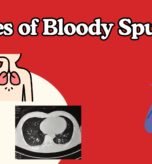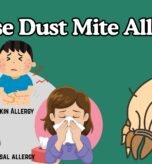Tuberculosis is a disease caused by a bacteria, Mycobacterium tuberculosis, that mainly affects the lungs but can also spread to other parts of the body.
Tuberculosis, or TB spreads by inhaling droplets produced by an infected person.
It can affect adults as well as children although, children get the disease most commonly from an infected adult in the family.
The tuberculosis bacteria enters the body through the airway and settles in the lungs. In the lungs and its surrounding lymph nodes, it may remain silent for many years without causing any clinical symptoms. This form of TB is called Latent TB where the person is infected but because of a strong immune response, doesn’t get pneumonia. However, in case of decreased immunity due to any infection, use of medicines like steroids, the TB bacteria becomes active and causes pneumonia and other problems. In active TB the child may have the following symptoms:
- 1. Fever
- 2. Weight loss
- 3. Loss of appetite
- 4. Fatigue
- 5. Cough with or without sputum
Pulmonary Tuberculosis: Children can have cough and fever lasting for more than a month. Some children can have blood in sputum or chest pain depending upon the severity of the disease.
Lymph node TB: When TB affects the lymph node in various parts of the body, swelling can be felt that firm and often filled with infectious material that needs to be extracted.
Abdominal Tuberculosis: The TB bacteria reaches the abdomen and causes swelling of the intestines and in solid organs like liver, spleen, kidneys and lymph nodes. This causes stomach ache, decreased appetite, abdominal swelling and fluid collection.
Neuro Tuberculosis: In the brain, the tuberculosis bacteria can cause multiple problems. Symptoms of neuro TB are seizures, headache, altered sensorium, loss of consciousness, paralysis.
Bone TB: TB bacteria can affect the spine or sacro-iliac joint most commonly. Child can have bone pain, decreased movements at the affected joint and swelling.
Less commonly, tuberculosis can affect other organs of the body like the bone, skin, eyes, spine, genitalia etc.
Treatment of tuberculosis
Tuberculosis is completely treatable with oral medicines that need to be taken for 6 months or more depending on the site and type of infection.
Anti-tubercular treatment or ATT is given for a total duration of 6 months. It comprises of 4 drugs namely, Isoniazid (H), Rifampicin (R), Pyrazinamide (Z), Ethambutol (E), along with supplemental Pyridoxine. In case of neuro TB or Bone TB, ATT may need to be given for 9 months to 1 year. Response to treatment is monitored at 2 months of start of treatment and based on that the duration of ATT is decided.
Monitoring for side effects is important in children on ATT medicines since most of the ATT medicines can cause liver toxicity. Pyridoxine is supplemented along with Isoniazid to prevent peripheral neuropathy which is a side-effect leading to nerve damage.
In some children, oral steroids may be required along with ATT. Surgical intervention maybe required in case of abdominal obstruction or in Neuro TB with raised intracranial pressure.
Children start gaining weight and appetite improves within 15 days of starting ATT. Other symptoms also improve within a month and neck swellings start regressing in 2 months.
Radiological improvement may take upto 6 months. In case of poor response to treatment, child may need re-evaluation might be required.
Most children require only 6 months of first line ATT. However, in around 1-2% cases, the tuberculosis bacteria may be resistant to one or more of the first line drugs and these children require different treatment protocol for Drug resistant TB (DR-TB).




